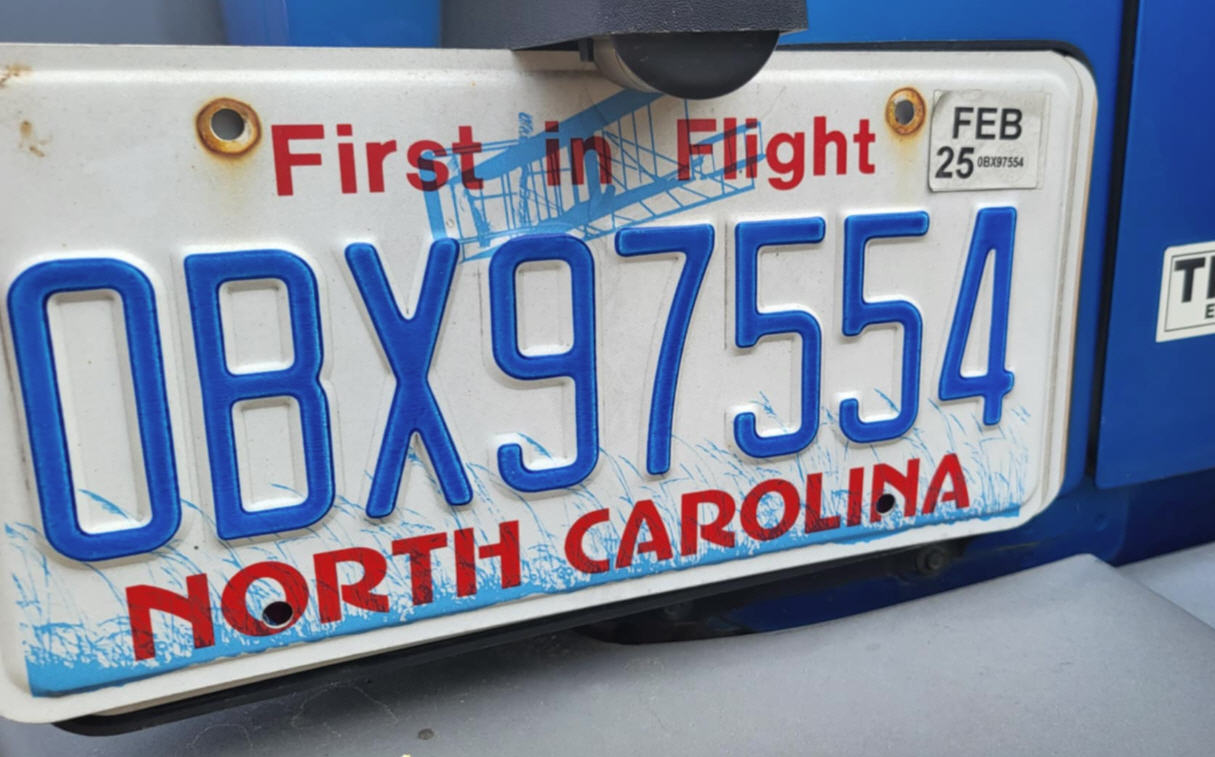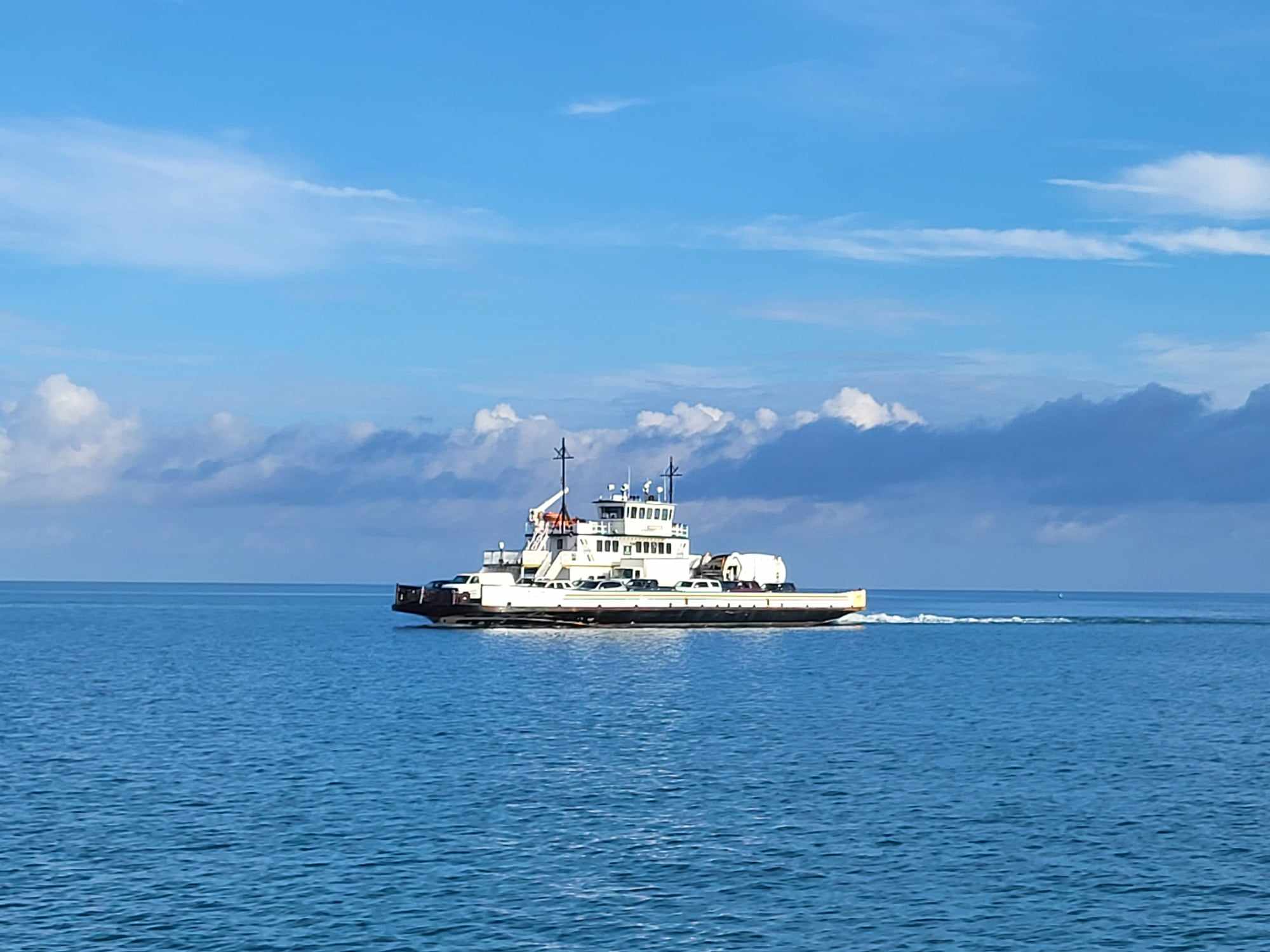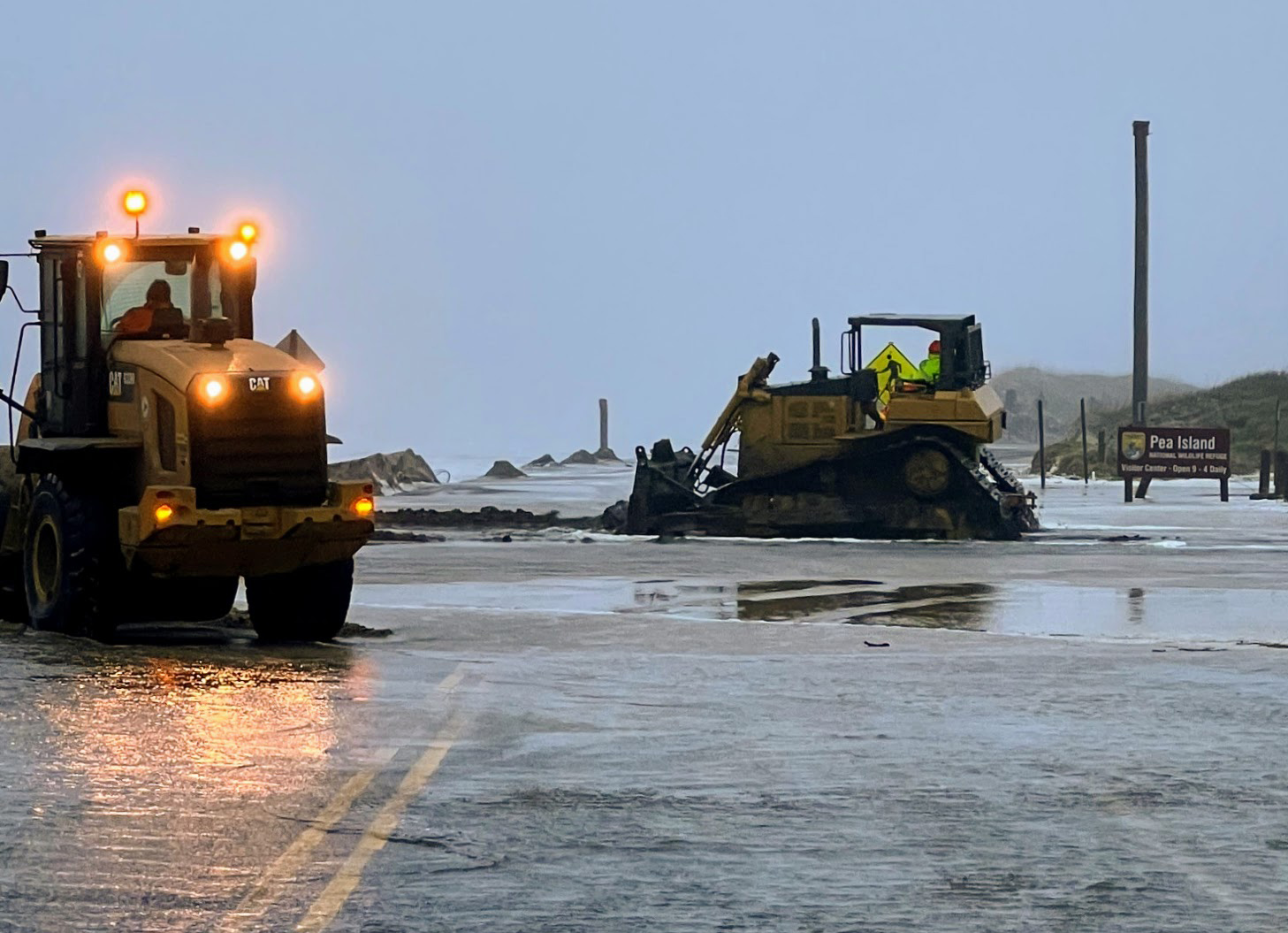The National Park Service closed Ramp 44 to Cape Point yesterday when the first of six piping plover nests in the area hatched.
Doug McGee, Park Service biotechnician, said today that the closure of the ramp to ORVs was to protect newly hatched piping plover chicks with the 1,000-meter buffer required in the federal-court sanctioned consent decree, under which the Cape Hatteras National Seashore is being managed until a long term ORV rule is in place.
The first piping plover nest hatched yesterday. There are four chicks from that nest.
McGee said a second four-egg piping plover nest in the area started hatching today. By early afternoon, two chicks had hatched and the other two eggs were expected to hatch this afternoon.
Both of those nests, he said, are in the area between Ramp 44 and Cape Point.
Pedestrian access through Ramp 44 to the beach and south toward the Point for three-tenths of a mile – almost to the “Narrows” — is allowed currently, McGee said.
The consent decree calls for only a 300-meter buffer for pedestrians.
The tip of Cape Point and part of the hook, he said, is not closed.
However, there is no through access for either ORVs or pedestrians.
This is what the Park Service is calling a “limited access area.” In other words, it is open if you can get there without stepping foot on the beach.
Pedestrians can wade in the water – below the low-tide line – to get to the Point. Or the area is accessible by boat, kayak, surfboard, etc.
It is not recommended that you try getting to the Point unless you know what you are doing and where the closures are.
Wading below the low-tide mark is difficult on any rough day, and so is accessing the Point by and type of craft.
A boater, kayaker, or walker who is forced by weather or water conditions to come onshore in a resource closure – or who comes onto the beach in a closure by mistake — is subject to being ticketed by the Park Service.
The four remaining piping plover nests in the Cape Point area are scheduled to hatch between now and May 23.
There have been three nests at South Point on Ocracoke. The eggs in one nest became victims of predation by ghost crabs. Another two-egg nest lost one egg to ghost crabs, and the remaining egg was abandoned. The remaining four-egg nest has a hatch date of about June. 3.
McGee said the piping plover chicks take about 21 to 35 days to fledge. Buffers remain in place until Park Service observers see the chicks flying or until they are 35 days old.
Last year, access to Cape Point was closed on April 14 because of a pair of oystercatchers exhibiting breeding behavior. About April 30, Ramp 44 was closed entirely because of the courting oystercatchers. Ramp 44 re-opened on May 10 after the oystercatchers settled down a nest between Ramps 43 and 44. However, there was still no ORV access to the Point.
Cape Point re-opened to ORVs on July 29 of last year.
Other ORV access highlights in the May 13 beach access report are:
• Seasonal closures went into effect in front the villages, at Coquina Beach, and at several sites on Ocracoke
• About 3.3 miles are open to ORVs on Bodie Island at Ramp 4. There was no access to the inlet or the Bait Pond.
• Ramp 23 south of Salvo is closed.
• Ramp 27 is open but it is a cul-de-sac.
• Beach is open about six-tenths of a mile north and eight-tenths of a mile south of Ramp 30.
• Beach is open eight-tenths of a mile south of Ramp 38.
• Ramp 43 is a cul-de-sac.
• Ramp 44 is closed.
• Ramp 45 is open and is a cul-de-sac.
• Ramp 49 in Frisco at the South Beach is open for 2.1 miles to the east and west for 1.2 miles.
• Ramp 55 in Hatteras village is open to ORVs along the ocean beach for about 1.1 miles to the southwest toward the inlet. There is no ORV or pedestrian access to the inlet.
• Ramp 59 on Ocracoke’s North Point is closed.
• Ramp 70 to 72 open for 1.8 miles.
• Ramp 72 to South Point is open along the ocean shoreline for four-tenths of a mile.
For more details on beach access for ORVs and pedestrians, see the Park Service’s weekly beach access report, also on the Beach Access and Park Issues Page.













